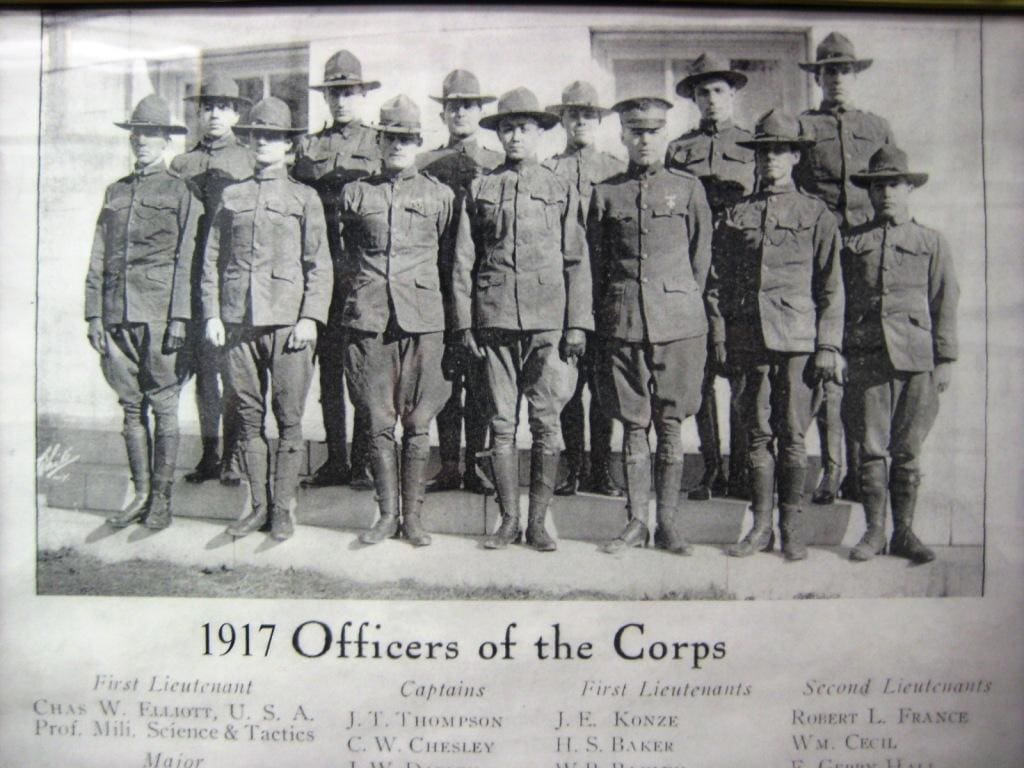Army ROTC at The Johns Hopkins University has a long and illustrious history. The conflict with Spain that set Cuba free and made the United States responsible for the future of the Philippine Islands stirred the patriotism of JHU undergraduates. On April 27, 1898, they assembled in old McCoy Hall and after an address by President Gilman and Dr. Gildersleeve, voted unanimously to form a company of volunteers and begin military drill. Nearly 100 students enrolled.
In the academic year 1913-1914, when the University was planning to move from downtown Baltimore, it was proposed by the director of physical education, Dr. Ronald T. Abercrombie, to the acting president of the University, Dr. William H. Welch, to establish a military unit. Assurances had been given that the War Department would assist in a very positive way and would supply instructors to handle the basic courses in tactics and physical training. Members of the faculty were willing to open their classes for theoretical work even up through the advanced course.
With the overwhelming details of moving to the Homewood campus, all the arrangements were not completed until early 1916 when it became known that Congress was likely to enact a law providing for military training in the colleges. At that time the undergraduates presented to University authorities a petition for the establishment of first of the proposed military departments. To be ready to act promptly whenever the law should become effective, the students formed a volunteer company of nearly a hundred and once again the campus echoed with martial sounds. Much of the credit for Hopkins receiving the first ROTC unit is due to the persistence of Dr. Abercrombie, the “Father of the Hopkins Army,” and Dr. Murray P. Brush, Dean of the College of Arts and Sciences.
With the passing of the National Defense Act on October 16, 1916, a unit of the Reserve Officers Training Corps was formally established at Hopkins with Lieutenant C. Winslow Elliot assigned as Professor of Military Science and Tactics. He soon had about two hundred students enrolled in a program. Several of the early Johns Hopkins University Professors of Military Science and Tactics published the first manuals for ROTC instruction through the JHU Press.
Over 3000 officers have been commissioned from the JHU ROTC program, including over fifty-five generals and admirals.
The Blue Jay Battalion has a long history of building leaders! Our motto embodies our desire and drive to become leaders of impact– “I’LL LEAD!”

